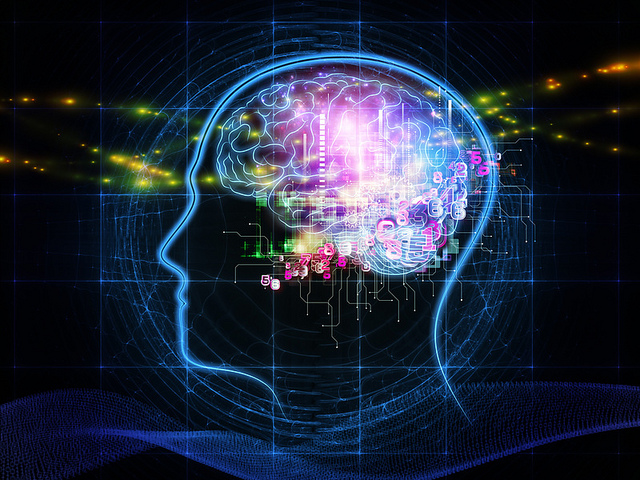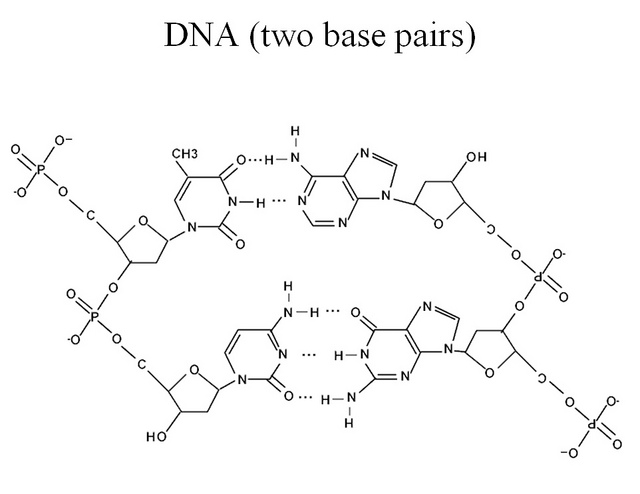2016 has shaped up to be another interesting year of advances in the technology field. You might remember having watched futuristic cartoons such as The Jetsons previously; technological developments are now heading even closer to some of the “fantasy” ideas of that show.
We might not quite have a housemaid robot in every home, but artificial intelligence is certainly one area which is moving forward rapidly, while “smart” objects and wearable technologies are also seeing further development.
It’s exciting to see how these technologies are developing, helping to solve real problems and adding to our development repertoire of what’s possible, so let’s check out some of the major shifts that are changing the landscape this year and beyond.
#1. Conversational Interfaces
First there was the GUI (Graphical User Interface), which tends to have developed recognizable patterns and flows over the last few decades. In fact, if a developer from the 1970s time-travelled to our current time, they’re bound to be amazed at advances such as miniaturization and speed, but they will essentially recognize how the modern-day GUI works.
Now though, we have rapid advancements in the development of the CUI (Conversational User Interface), a long-held dream of possibly every tech-geek ever. It’s not a brand new concept, but more recent updates have made the CUI more intuitive and more in line with real-world use.
As an example, take a look at the Meekan app. The developers wanted Meekan to be a robot which understands the variances in language which people might use to request the same thing. In fact as they say “be as precise or as vague as you want.”
Meekan deals with conversation through voice or through typing and is built to take care of calendar and scheduling. The point is that you’re not relying on schlepping through your calendar or trying to coordinate other people’s calendars in order to get things booked in. A simple “let’s have coffee with Sam next week” has Meekan coming up with suitable solutions.
Mobile Use
We’ve had a certain amount of voice activation on mobile devices for a while now, with assistants such as Siri or Cortana. These still have issues with accuracy though, which you can probably attest to if you’ve ever found yourself trying to shout a command at your phone!
Baidu, China’s leading internet-search company has lead the way with a powerful voice-recognition system which can recognize both Mandarin and English. Its Deep Speech 2 program learned the languages via machine learning—listening to hours upon hours of transcribed audio. This is a considerable advancement on older voice technologies which have a manually-done element.
Deep Speech 2 even allows voice recognition in noisy environments and is doing very well in terms of accuracy, stating a 3.7% error rate for short phrases, whereas Google states an 8% word rate error.
You can expect to see Deep Speech 2 incorporated in home technologies as well, particularly following Baidu’s partnership with Peel. From chief scientist Andrew Ng: “I hope to someday have grandchildren who are mystified at how, back in 2016, if you were to say ‘Hi’ to your microwave oven, it would rudely sit there and ignore you.”
#2. Artificial Intelligence Advances
We’ve had a certain amount of exposure to artificial intelligence—the large percentage of the world with smartphones interact with it to some degree every day. However, have you ever been given advice beyond something easily found in basic data by your phone?
Artificial intelligence is developing to the point where it is predicted it will impact virtually every part of our lives, including important decision-making by world leaders.
IBM’s Watson is a stand-out example of leading-edge artificial intelligence development. It is cloud-based intelligence with access to huge amounts of data which it can use to perform analysis, for example from online chatter.
Watson is even involved with cancer research, with an emphasis on the quality of who is doing the teaching. IBM states that the world’s best oncologists are involved.

Photo credit: A Health Blog via Visual Hunt / CC BY-SA
#3. Robots Teach Robots
We haven’t quite got to “I, Robot” just yet, but robots are slowly, but surely learning new skills and passing them on to others like them.
Stephanie Tellex, an assistant professor at Brown University is, along with her graduate student John Oberlin working on a project to teach their industrial robot, Baxter, to grasp one million items.
This might sound like something basic, but robots can’t automatically recognize that the object in front of them is a cup or a pair of socks, items which require a different grip. It may take dozens of tries before they learn to recognize and pick up various items. Once Baxter learns, he is able to pass the information along to other robots who have similar sensors.
When you think about it, the implications for the workplace, warehousing or even help in the home get us that much closer to those housemaid robots…
#4. Advanced Materials
From very durable Gorilla Glass for your electronic devices to advances in plastics technology, the materials used to create the technology we love are seeing advances geared toward longevity and environmental concerns.
For example, IBM discovered recyclable thermoset plastics a couple of years ago and developments are continuing. Why is this significant? Plastics are usually graded as either thermoplastic or thermoset. While thermoplastics can generally be melted down and reused, thermoset plastics are “set” and generally keep their shape once manufactured.
The durability of thermoset plastics make them a popular choice for your mobile phone or laptop, but they also create a headache for landfills the world over. This means the development of recyclable thermoset plastics is a significant step forward in reducing the environmental impact of technology.
#5. DNA App
2016 is set to be the year apps are released to give you information related to your particular DNA. Helix aims to take a spit sample and store DNA data for every person who signs up with them. From there, users can purchase apps from other developers who use the DNA information gathered by Helix (with permission from the user, of course) to provide information such as genealogy, whether you are programmed to have a sweet-tooth, and dietary recommendations.
Helix’s focus areas are: health, lifestyle, genealogy, nutrition, fitness and family. Their aim is to make access to information on your genetics and what they mean for you much more accessible and cost effective than that data is at present.

Photo credit: Allen Gathman via VisualHunt.com / CC BY-NC-SA
#6. Autonomous Driving (Nearly)
Google’s Self-driving Car Project has been in existence since 2009 and logged over 1.5 million hours. For now, they are still testing and gathering data so their technology is not yet available to the average consumer. All cars in their project have test drivers along for the ride.
In late 2015, Tesla released their software update known as “Tesla 7.0” or “Autopilot” to Model S owners who had purchased the software. “The latest software update, 7.0 allows Model S to use its unique combination of cameras, radar, ultrasonic sensors and data to automatically steer down the highway, change lanes, and adjust speed in response to traffic. Once you’ve arrived at your destination, Model S scans for a parking space and parallel parks on your command.”
This release to the public by Tesla shows an incremental approach to autonomous driving technology which is in contrast to Google and others. Whereas Google is gathering data with the goal of releasing a fully autonomous vehicle, Tesla is providing technology in increments as it becomes available.
One thing to watch with this sort of technology is the regulatory environment. The idea of “driverless” cars has no place within current legislation, while autonomy with a driver sits in a bit of a grey area. Developments are progressing ever-closer though, with many believing we will see true autonomy within the next 5 years.
#7. Biometric Security
From fingerprint technology on Apple devices and different types of biometric security measures, including facial and retina recognition brought by Windows Hello, biometric security is making leaps forward for ordinary consumers.
It’s not too far of a stretch to see biometric data extending to how we pay for things in stores, even how we open our front doors, though as Wired points out, this presents a host of new security concerns. How safe is biometric data when databases are still routinely hacked? What about the fact that your fingerprints are in fact, public information which can be lifted off anything you have touched? By comparison, a password (usually) stays inside your head and may not be as easy to get to (barring keystroke technology).
2016 is seeing further research and development into biometric security, but we’ll need to see these legitimate concerns addressed too…
Final Thoughts
One thing can always be said for the world of technology—it changes. This year we are seeing some impressive developments affecting the technology available to regular consumers, as well as developments in AI and robotics which will impact manufacturing and nearly every type of research or decision-making scene.
It’s interesting to note with developments such as biometric security or DNA screening that people are now being asked for more personal information in order to provide some type of service. This adds pertinent discussion around privacy and ethics to the technology scene. After the scenario this year when the FBI wanted Apple to hack an iPhone, will we see more incidents like this in the future where authorities want biometric or DNA data?
If you need world-class developers to help on your app (or other software) for this developing tech market, contact us to see if we are a good fit for your software plans.
